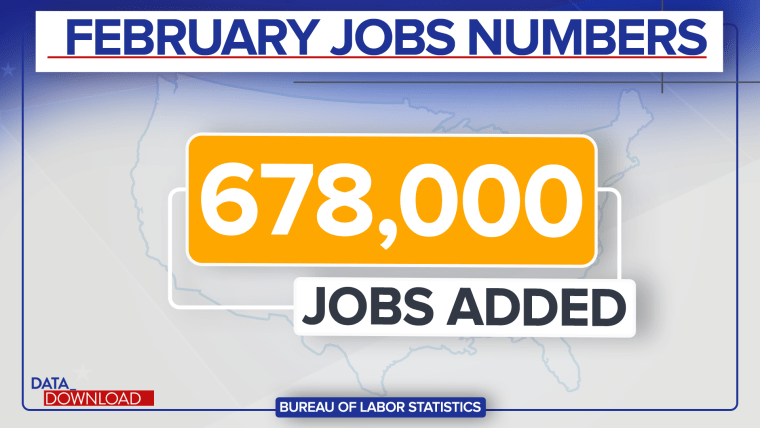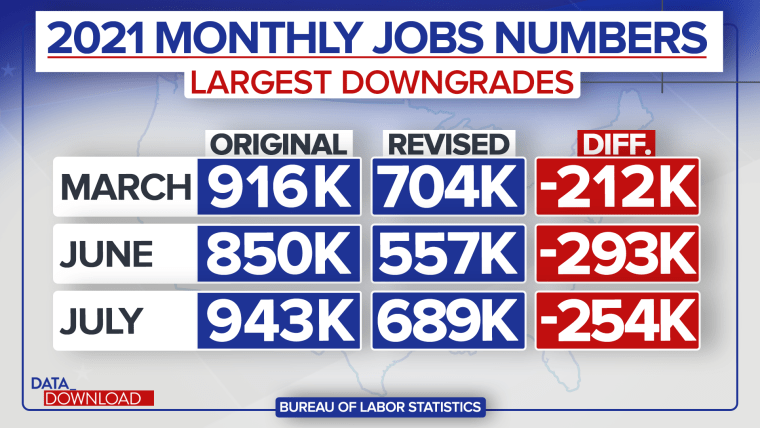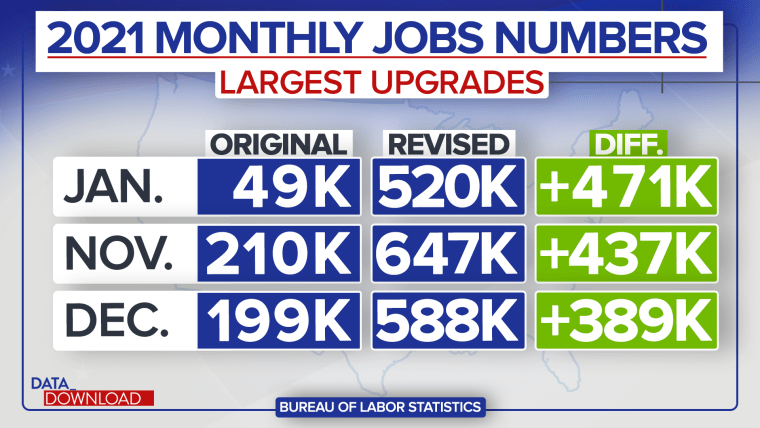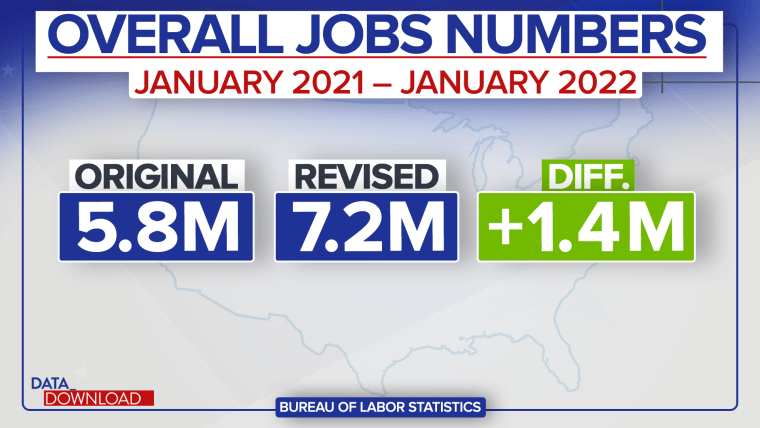WASHINGTON — Friday was a good day for U.S. economic news, at least on the employment front. The Bureau of Labor Statistics reported the country added 678,000 jobs in February, and that’s coming off of 2021’s run of good reports.
But before anyone runs around trumpeting that number, it might be better to see what the “revised” figures look like next month — and beyond. Because the last year has shown just how hard it is to get a handle on the economy in a world dominated by a global pandemic.
When you look at the first reported jobs numbers and their later revisions since last January, you see a stark difference between “real-time” data (or close to real-time data) and data that has been vetted and analyzed. There have been some enormous swings.
Let’s start with Friday’s figure, those 678,000 jobs.

That’s a pretty good number. It was 197,000 higher than last month’s 481,000 jobs. And it was higher than all but three months since January of 2021.
But how real is that February figure? The last year has brought some massive revisions — up and down — to the monthly jobs numbers that are released the first Friday after the preceding month.
Last spring and summer, the time when the Covid-19 vaccines were being rolled out, brought some big downward adjustments.

The original jobs number for March of 2021 was an outstanding 916,000, but it was later pushed down to 704,000. That’s still not bad, of course, but more than 200,000 lower than the initial figure.
For June, the new jobs number was 850,000, but subsequent analyses pushed it down to 557,000, a difference of -293,000. And July’s 943,000 jobs number, was later bumped downward to 689,000. That’s 254,000 fewer jobs.
It might be tempting to view those changes as evidence of the federal government trying to sell an over-rosy scenario — push out a big number and later quietly adjust it downward. But that interpretation ignores the other big revisions last year. There are some reports that lowballed the jobs number, particularly around the holidays.

Last January, in 2021, the original new jobs estimate was an anemic 49,000. But the figure was later pushed upward to 520,000 new jobs, a difference of 471,000 jobs.
And this year around the holidays, we saw similar original estimates and later revisions.
In November of 2021, the Bureau of Labor Statistics originally estimated there were 210,000 new jobs created. Subsequently, the figure was boosted up to 647,000, an increase of 437,000 jobs. In December, the original jobs number rang in at 199,000, but it was revised up to 588,000. That’s a bump of 389,000 jobs.
And when you add it all up, the numbers paint a very different picture of employment in the U.S. economy since January of 2021.

Those original jobs estimates would have equaled about 5.8 million jobs created during the Biden Administration, from January 2021 to January 2022. The revised numbers put that figure at more than 7.2 million jobs. That’s a difference of 1.4 million, or almost 25 percent.
What’s driving all those big revisions? Economists note that Covid has played havoc with the “seasonal adjustments” they do to get a grip on the different hiring patterns from month to month. After all, the disruptions that have come with the pandemic have altered many of the traditional “seasons” in the United States — everything from vacations to holiday shopping.
There have been false-start returns to work and school. Changes around if and when we dine out, go to the movies and go to visit loved ones.
For all the talk of how the pandemic has made every day feel the same, it actually has made the world less traditionally predictable in the broader sense. And for economists that’s an obstacle to understanding what is happening and going to happen in the weeks and months ahead.
None of this is to say that this week’s jobs number is weak or troubling. It was quite good. But ultimately it was an estimate based off surveys of households and business establishments. It is subject to change.
There’s some hope these calculations may be getting easier. This week’s revision of January’s jobs figure was only 14,000 — an adjustment of only about 3 percent. But remember that revision can also be revised.
In a world still deeply impacted and unsettled by Covid, big revisions have become commonplace — in life and in economics.
Source: | This article originally belongs to Nbcnews.com










